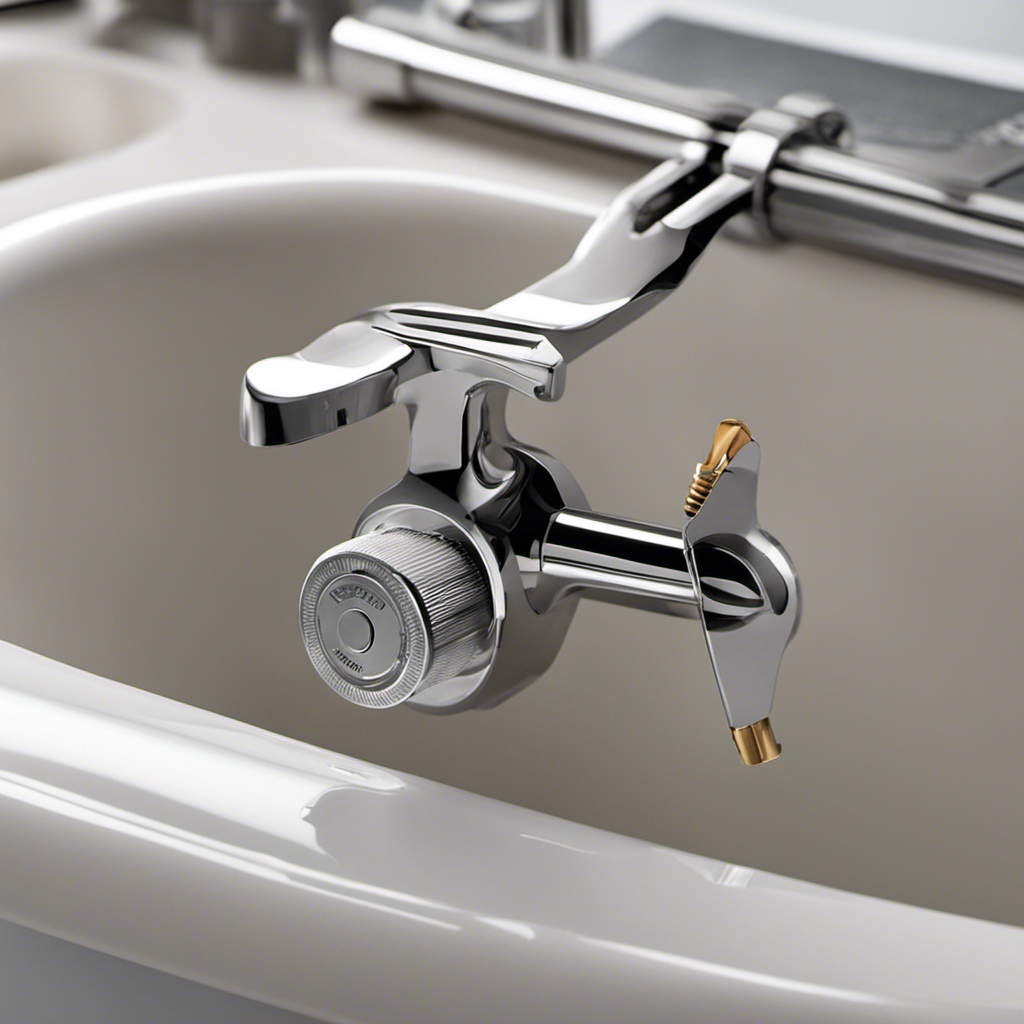Like a slippery ice rink waiting to cause a fall, bathtubs can be hazardous when not slip-proofed. In this article, I will guide you through the process of making your bathtub a safe haven.
We will explore different methods to assess the level of slipperiness, choose the most suitable slip-proofing technique, and apply non-slip coatings or install bathtub mats or strips.
With these tips, you can maintain a slip-proof bathtub and avoid any potential accidents.
Key Takeaways
- Assess the bathtub surface for slick areas and smooth/glossy areas lacking grip
- Choose a slip-resistant option with a durable and textured surface
- Consider using non-slip coatings like paint or refinishing products
- Install bathtub mats or strips for added traction and grip
Assessing the Slippery Surface
To assess the slippery surface of your bathtub, you should run your hand along it to feel for any areas that are particularly slick. This is an essential step in ensuring the safety of your bathtub, as it allows you to determine its slip resistance.
When testing the bathtub surface, pay close attention to any smooth or glossy areas that may be more prone to causing slips and falls. These areas can be identified by their lack of texture or grip.
Additionally, look out for any soap scum or residue, as it can make the surface even more slippery.
Choosing the Right Slip-Proofing Method
When deciding on the best method to make your tub safer, it’s important to consider different slip-resistant options. Assessing slip resistance is crucial in determining the most effective solution for your bathtub.
Here are some key factors to consider:
- Material: Evaluate the material of the slip-resistant option to ensure it is durable and long-lasting.
- Texture: Look for a product that offers a textured surface to provide better grip and reduce the risk of slipping.
- Installation: Consider the benefits of professional installation. Experts can ensure proper placement and long-term effectiveness of the slip-resistant solution.
Professional installation offers several advantages. Firstly, experts have the knowledge and experience to assess your bathtub’s specific needs and recommend the most suitable slip-resistant option. Additionally, professional installation ensures a secure and long-lasting solution, giving you peace of mind and reducing the risk of accidents in your tub.
Applying Non-Slip Coatings
Consider using non-slip coatings to enhance the safety of your tub and reduce the risk of accidents. Non-slip paint or bathtub refinishing products are effective solutions for making your bathtub slip-proof.
These coatings are specially designed to provide a textured surface that increases traction and prevents slips and falls. Non-slip paint is typically applied directly onto the surface of the bathtub, creating a durable and long-lasting non-slip finish. Bathtub refinishing involves applying a new layer of material, such as acrylic or epoxy, onto the bathtub surface.
During this process, a non-slip additive can be incorporated into the refinishing material to create a slip-resistant surface. Non-slip coatings not only improve the safety of your bathtub but also provide a sleek and aesthetically pleasing finish.
Now, let’s explore another slip-proofing method: installing bathtub mats or strips.
Installing Bathtub Mats or Strips
You can enhance the safety of your tub and reduce the risk of accidents by installing mats or strips in your bathroom. Here are some reasons why bathtub mats or strips are essential for slip-proofing:
-
Prevents slips and falls: The main purpose of these accessories is to provide traction and grip, reducing the chances of slipping in the tub.
-
Easy to install: Bathtub mats or strips are simple to install and can be done as a DIY project. No need to hire a professional.
-
Versatile options: There are various types of bathtub safety accessories available, including non-slip mats, adhesive strips, and suction cups, allowing you to choose the one that suits your needs and preferences.
Maintaining a Slip-Proof Bathtub
To keep your tub safe and accident-free, regularly clean and inspect the mats or strips. This is essential for maintaining a slip-proof bathtub. Regular cleaning ensures that the mats or strips remain free of dirt, soap scum, and other substances that can reduce their effectiveness. Use a mild detergent or vinegar solution to clean the mats or strips, and make sure to rinse them thoroughly afterward.
Inspecting them regularly is also important to check for any signs of wear or damage. If you notice any fraying, cracking, or peeling, it’s time to replace them. Additionally, consider using anti-slip bath products such as non-slip bath stickers or adhesive treads for added safety. These products provide an extra layer of protection against slips and falls in the tub.
Conclusion
In conclusion, slip-proofing your bathtub is a crucial step in ensuring safety and preventing accidents. By assessing the slippery surface and choosing the right method, such as applying non-slip coatings or installing bathtub mats or strips, you can significantly reduce the risk of slipping.
Remember the adage, ‘An ounce of prevention is worth a pound of cure,’ and take the necessary precautions to create a secure bathing environment. With proper maintenance, your slip-proof bathtub will provide peace of mind and a worry-free bathing experience.










